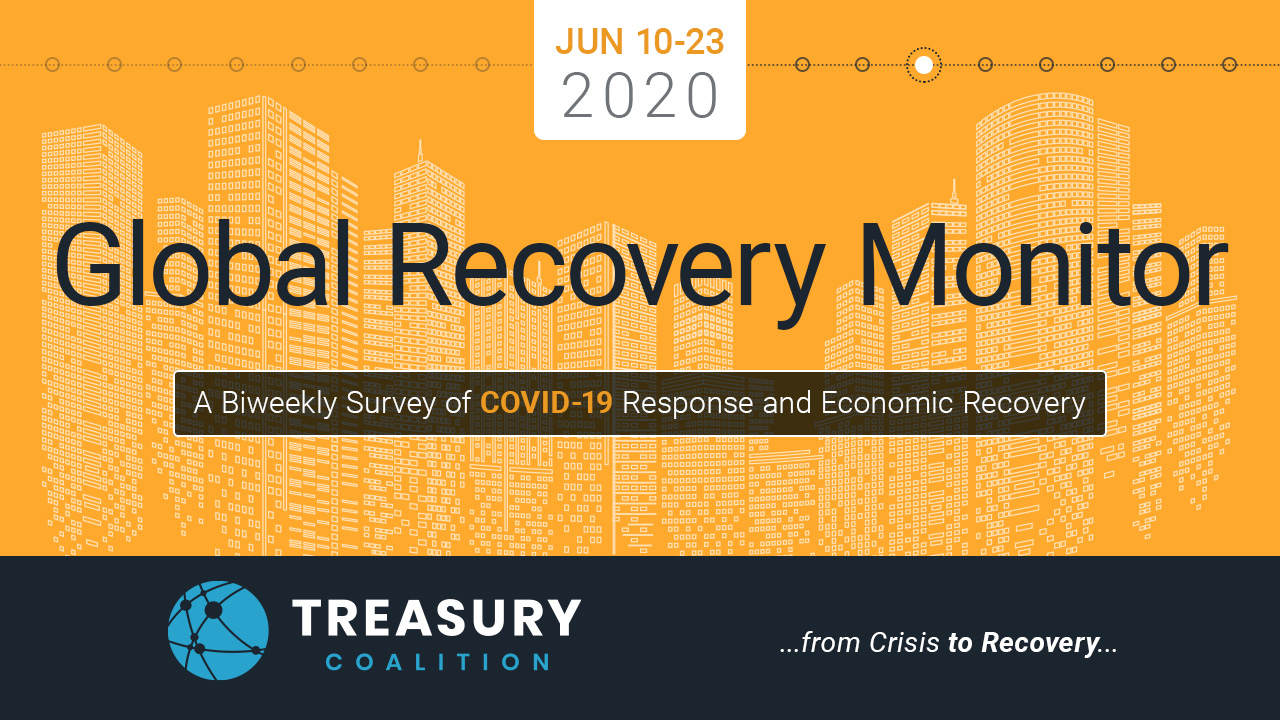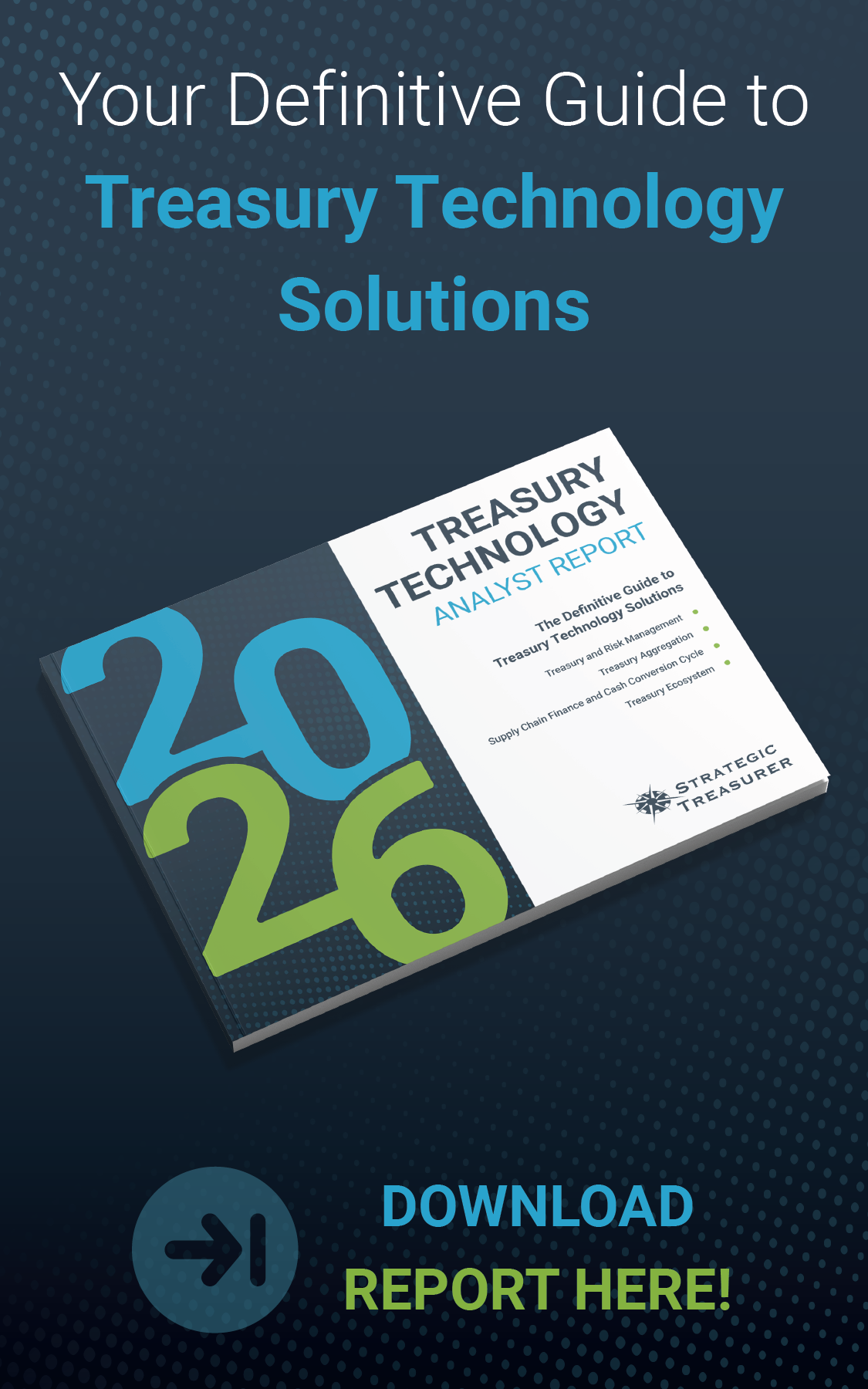A Review of COVID-19's Impact on Treasury: From Crisis to Recovery
Date: Tuesday, June 16, 2020
Times: 11:00 AM & 2:00 PM EDT
Where: This is an online event.

11:00 AM Speakers
Mathilde Sanson
Chief Customer Officer - GTreasury
Craig Jeffery
Managing Partner - Strategic Treasurer
Download the webinar deck here:
2:00 PM Speakers
Dave Pierce
Managing Director Global Hedging Products - GPS Capital Markets
Craig Jeffery
Managing Partner - Strategic Treasurer
Ernie Humphrey
CEO - Treasury Webinars
Download the webinar deck here:
Global Recovery Monitor Survey
The Global Recovery Monitor provides rapid exploration and response reporting on major factors impacting treasury and finance organizations. This effort is supported by the Treasury Coalition which consists of leading solution providers leveraging their networks to ensure comprehensive results for the good of the profession.
You may also be interested in:
#390 – Expectations for 2026: Fed, Monetary Policy, Economy (Federated Hermes)
In this episode, Craig Jeffery speaks with Debbie Cunningham and John Mosko of Federated Hermes about expectations for 2026. They cover interest rate policy, Fed leadership changes, inflation pressure, and investment strategy. How should treasury teams respond to a slow-growth environment and policy uncertainty? Listen in for insight.
Webinar: Protecting Cashflow: How to Stop Late Payments Before They Start | January 22
Late payments remain a common challenge for treasury and AR teams, increasingly disrupting cashflow, forecasting, and working capital. This webinar will examine why overdue receivables are no longer just a downstream collections issue but an early warning signal of broader payment risk. Join Craig Jeffery of Strategic Treasurer and Pete Younghans of Esker as they explore how treasury and AR leaders can move from reactive collections to proactive cashflow protection, leveraging automation, analytics, and proactive workflows to identify payment risk sooner, reduce DSO, improve forecasting accuracy, and protect organizational liquidity.
Webinar: Staying Current in Treasury: A Structured Approach to Changes and Challenges | January 28
The environment is constantly changing, and treasury can’t stand still. From shifting regulatory requirements to emerging technologies and new industry pressures, corporate teams are expected to stay informed and adapt, often with limited time and resources. This fast-paced webinar explores how organizations can build their treasury “radar” to identify changes and challenges as they develop. See how to monitor the environment and how partnering with an experienced treasury consultancy can better enable organizations to move from a reactive posture to a deliberately proactive approach.
We’ll discuss the value of structured, expert-led updates that condense complex developments into clear, actionable insights. Attendees will learn how quarterly or tri-annual advisory sessions can keep their teams aligned on regulatory shifts, technology advancements, market trends, and operational leading practices. Whether your goal is reducing risk, identifying new opportunities, or simply staying compliant, the right guidance ensures you’re maintaining your radar to be alerted early. Avoid being caught off-guard or unprepared. Join us on this 30-minute webinar to learn how systematic touchpoints can keep your organization in front of emerging changes.







